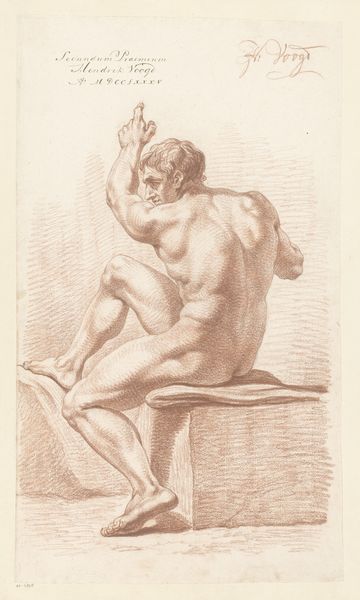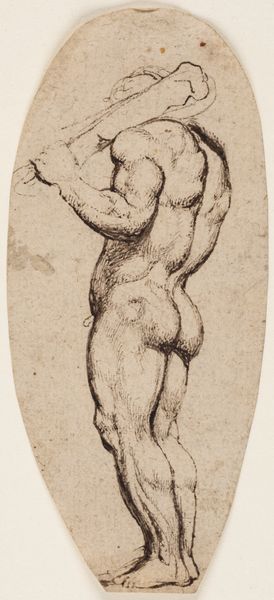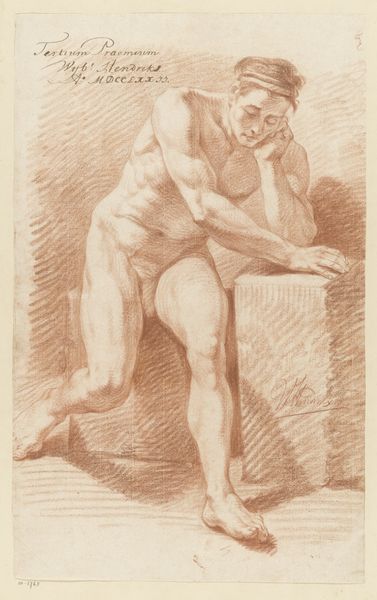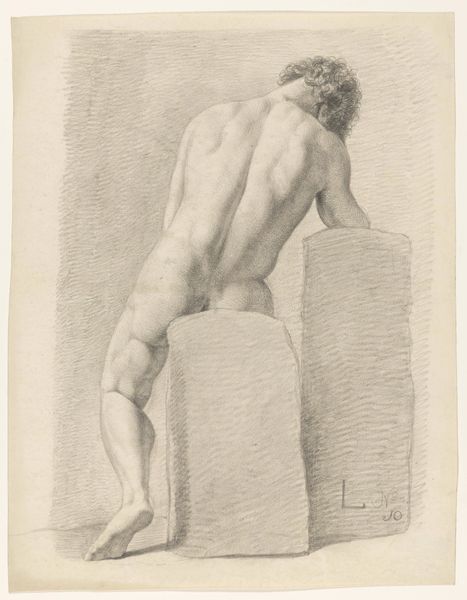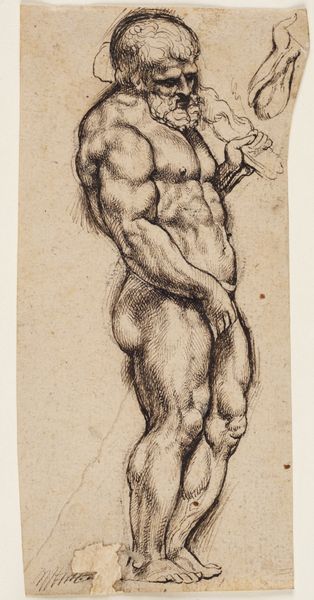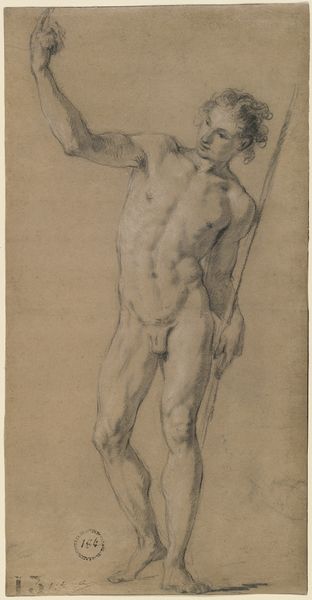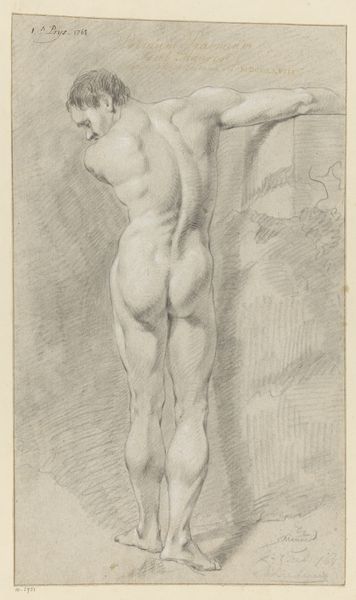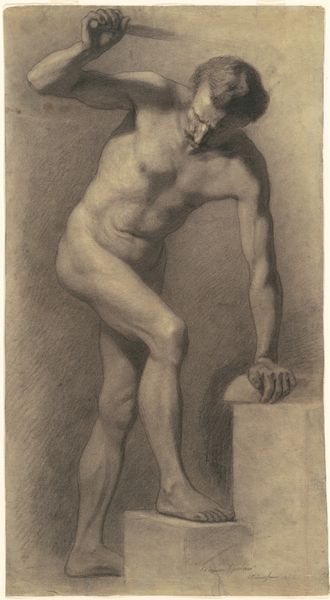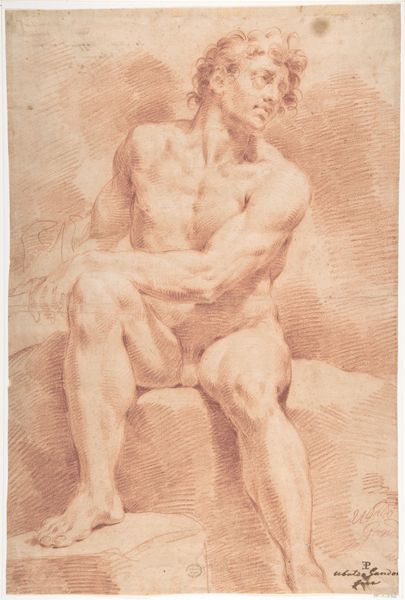
drawing, ink, indian-ink
#
drawing
#
high-renaissance
#
toned paper
#
light pencil work
#
pencil sketch
#
charcoal drawing
#
possibly oil pastel
#
charcoal art
#
ink
#
pencil drawing
#
underpainting
#
indian-ink
#
13_16th-century
#
12_15th-century
#
portrait drawing
#
watercolor
Copyright: Public Domain
Curator: Here we have "Mänlicher Rückenakt, Torso," a male back nude study rendered circa 1520-1525 by Domenico Campagnola. It’s currently held in the Städel Museum. Editor: Immediately, I'm struck by the dramatic play of light and shadow, especially the artist’s skillful rendering of the musculature. It has a certain weight and power. Curator: Precisely. Campagnola uses delicate strokes of ink and Indian ink combined with other possible materials such as pencils to sculpt the human form. Notice how the strategic placement of shadow accentuates the convex regions. Editor: Speaking of material, this work’s dependence on toned paper gives the artist some latitude. In the absence of pure whiteness, the tonal gradation allows for a deeper assessment into production in workshops. It’s difficult to render a work such as this by merely freehand, without accounting for studio practice. Curator: Agreed, though the drawing style still exudes a certain softness, a pictorial aesthetic which harkens back to the conventions of Renaissance idealism. He clearly prioritized harmony and idealized proportion above all else. Editor: Do you think Campagnola intended for this to be merely a preliminary sketch or a finished piece, meant for study as much as display? I look at the lines, some firm, others light as a feather; It really gets me thinking about its making. Curator: That’s a compelling observation. The cross-hatching technique is quite complex, creating visual texture as well as lending volume to the muscles and suggesting their underlying structure. Its dynamism is self-contained, so it’s perfectly able to sustain our scrutiny as a work in its own right. Editor: Looking closer at the contour lines, though, it seems that their thickness emphasizes that sense of dimensionality you speak of, as if it almost becomes tangible! Perhaps this lends additional proof about how the High Renaissance prized a collective understanding, as opposed to an individual mode of creativity. Curator: Your reading reminds us how this study offered his contemporaries a masterclass in anatomy and ideal form. And for modern viewers, it presents the artist’s mastery of medium in this early exploration. Editor: Yes, there’s so much detail about Renaissance studios packed within this little gem that one can't help but imagine all the collaboration taking place under its art historical surface!
Comments
stadelmuseum about 2 years ago
⋮
In view of the torso figure and the modelling of certain muscle sections using strong contrasts of light and dark (rilievo), the drawing bears reference to an antique sculpture, which may have served the artist as a model. Yet because the figure’s pose alternates between motion and staticity, it is conceivable that the artist also took inspiration from a live model, perhaps as a means of enhancing certain areas. It thus combines observation of nature and artistic interpretation in a manner characteristic of the dawn of the sixteenth century.
Join the conversation
Join millions of artists and users on Artera today and experience the ultimate creative platform.
